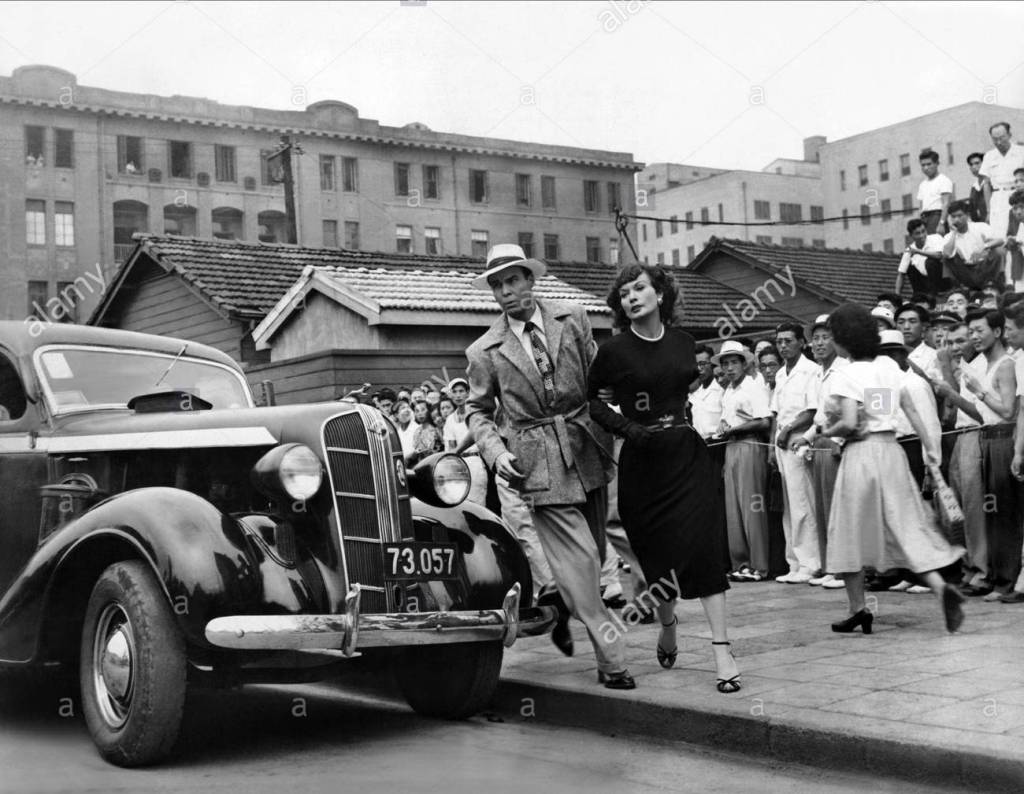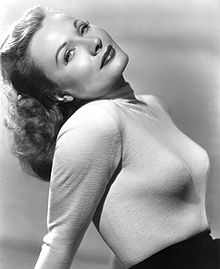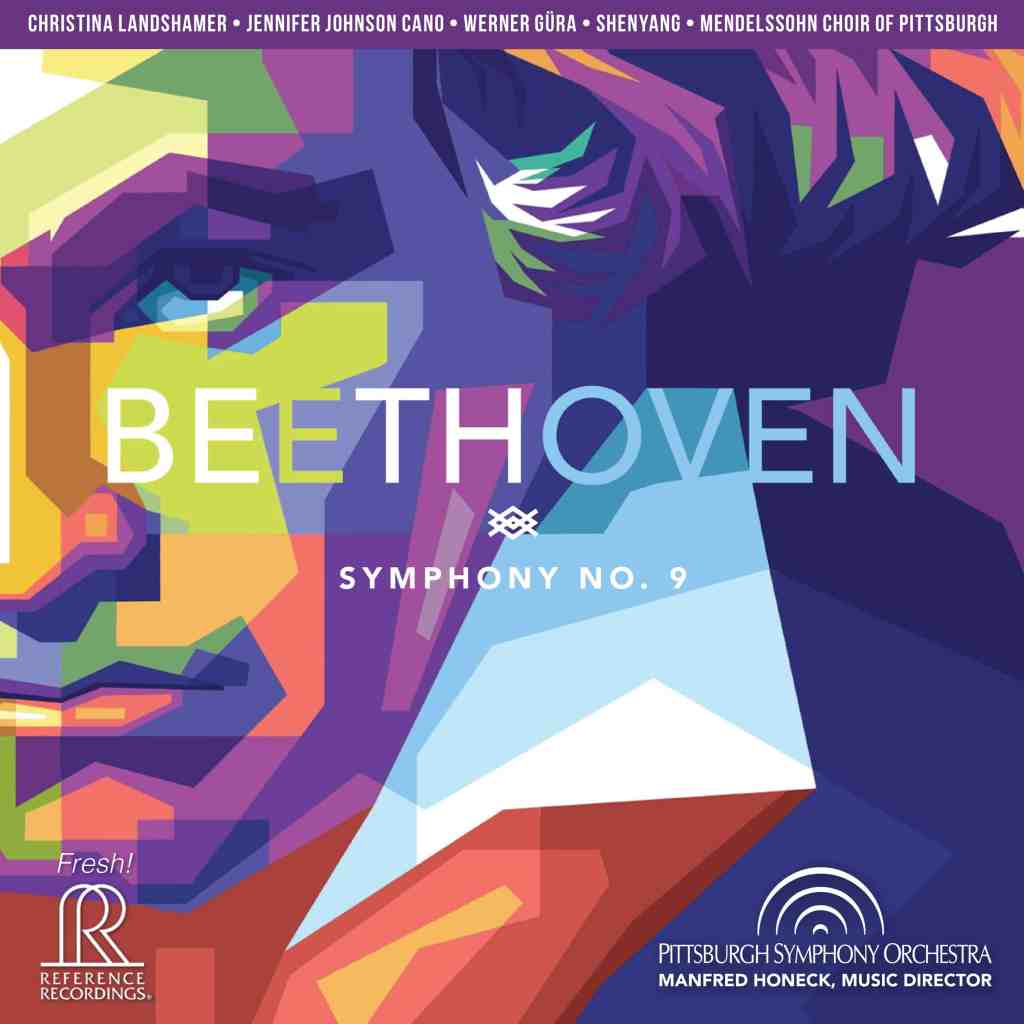Brahms and Shostakovich with Olga Kern
May 4, 2022

Not having heard the Brahm’s work, I expected something dreamy, not dissonant. As I researched further I found it was written for two pianos before Brahms made this a 34b as a Sonata. It was dedicated to Princess Anna of Hesse. It is scored for two violins, piano, bass, and cello. Herman Levi that Johannes (1833-1897) into a thing of beauty, a masterpiece of chamber music, proving that good friends are honest ones.
While European music had been changing under Lizst and Wagner Brahms saw Beethoven as the one to emulate. He begins in a dark but organized (you would accept nothing else) from Brahms. It is Schubertian in nature offering a military march. The finale which is played as a yearning movement one that I like a lot as she shows off her talents and really becomes a part of it.
While formalism plays a part in Stalinist Russia Shostakovich trod a fine line with the Beethoven Quartet and ended up being well received. Composed prior to Hitler’s invasion Shostakovich maintained his status as the country’s most favored composer. Listen carefully to both of them and you will see how similar they are. I like both of them along with the playing of Kern. She has a nice style and listening to her is easy on the ears.
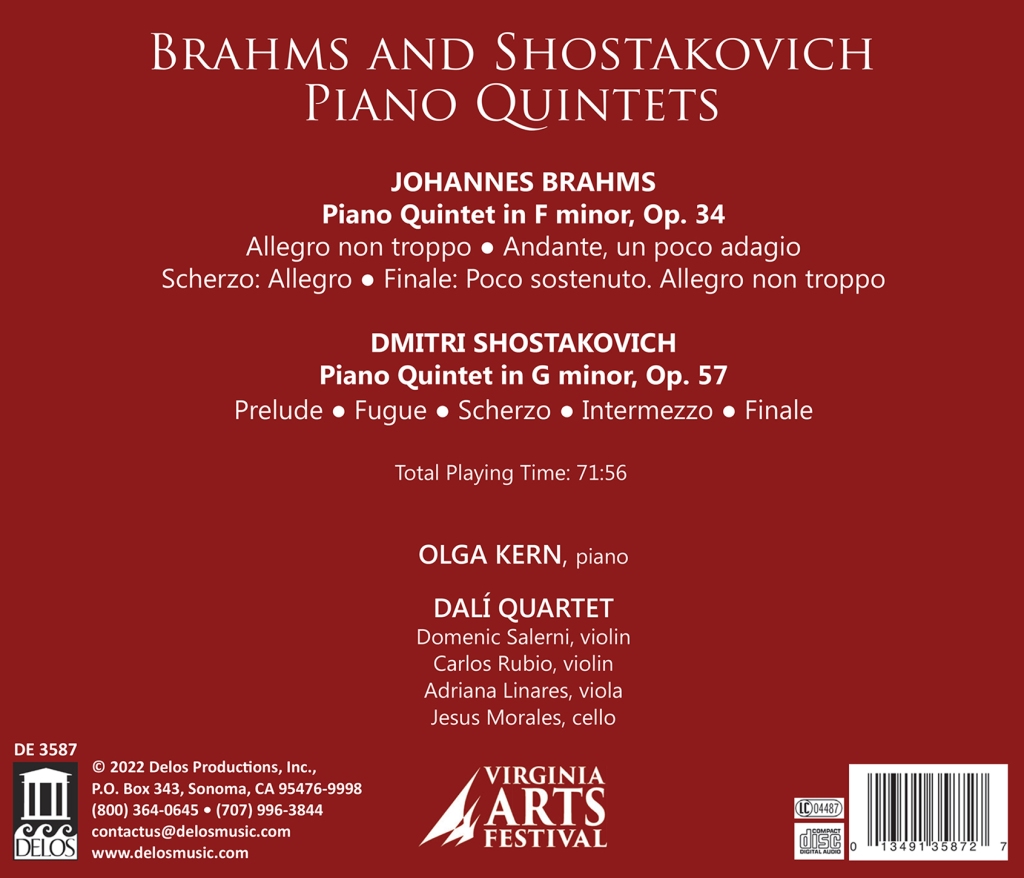
Tokyo File 212
February 14, 2021

1 Main Title 1:44 2 This is Tokyo 2:37 3 Jim Meets Steffi 2:07 4 Source Montage 1:43 A. Virgin Wood Nightclub B. Knickerbocker Club C. Hula Club 5 Jim Sees Taro 1:24 6 Steffi is Tired 1:57 7 Kamikazi Class 2:05 8 The Telegram 1:36 9 The Big Shrine 3:15 10 At the Russian Consulate 1:34 11 The Kubuki Theater 1:18 12 Jim Gets the Third Degree 1:18 13 Newspaper Headline 0:28 14 Hello, Mamiko 1:13 15 Mamiko is Kidnapped 0:52 16 Taro In Hospital 3:25 17 Steffi Cries 2:10 18 Jim Gives Her a Gun 1:18 19 Railroad Strike 0:32 20 Mamiko Dies in Taro’s Arms 1:42 21 Taro Gets Caught 1:19 22 Taro Commits Suicide 0:59 23 End Title 0:18 Total Time 37:50
Tokyo Files 212 is the second part of the Albert Glasser collection 2 CD set which also includes Huk. This 1951 film also takes place in 1951 but this time in Japan. The music was originally released on Starlog LP SAAG 10.002 by Screen Archives Entertainment. The film focused on the very real Communist evil and had a huge selling point of being the first film shot on location in Japan providing realism to the scenes as well as saving money for RKO pictures. It starred Florence Marly as Steffi Novak and Robert Peyton as Lee Frederick. The film co-starred Katsuhiko Haida as Taro Matsuto, Reiko Otani as Namiko,Tatsuo as Mr. Matsuto,Tetsu Nakamura as Mr. Oyama, Suisei Matsui as Joe, and Ichimaru as Geisha singer who played herself.
Jim Carter is hired to pose as a reporter in order to gather information about Communist activities. He quickly meets Steffi Novak who is a woman without a country and refers to herself in the third person. She is helping Mr. Oyama head of the communist party to get her sister Christine out of North Korea. Trying to learn information from Taro Matsuto, who he went to college with, he learns he went to kamikaze school which was cut short by the surrender of Japan. The film cuts to war films from the japanese of the kamikaze pilots who are trained to die. This section of the film seems to be a bit out of place. I understand Taro was trained to die and does at the end of the film but is this really necessary? When Jim returns to his hotel room he is beaten and told to stay away from Taro. Steffi meets Taro's old girl friend, she is kidnapped by Oyama who throws her out of a car injuring her enough to send her to the hospital. While having dinner Jim is told that the meal is poison, they have learned he is an agent. Jim arrests her and tells Steffi that her sister is dead and she agrees to help him. Taro agrees to set up a strike in the railway system to halt the communist movement. When he goes to Namiko telling her of his love she has already died. When he learns of the communist plan and rebels he is stabbed and to save Steffi, Jim, and Matsudo from the bomb planted jumps from the window saving them from the bombing. Jim, completing his mission is seen off by Steffi and Matsudo with door left open for Jim to return and be with Steffi. The film was a flop and a lot of the 700,000 spent by RKO wasn't recovered. Today there is a colorized version of the film which has been cleaned up and is available on YouTube https://www.youtube.com/watch?v=B4KOIwJ1Mh4. It has never been blue rayed into a quality print which would have greatly improved the watching experience of the film. My second watch of the film was a lot better and I enjoyed it. Albert recorded all of his material on reel to reel and this became the master recording for some of his releases. There was a lack of a smooth transition between some of the tracks, that is they just jumped into the next track without delay. There wasn't an even spacing. This is a minor point and nothing more than an annoying distraction. Main Title sets the Japan mood for the picture with a sweeping melodic theme playing over the titles, beginning with cymbals followed by an introduction to the violins offering the main theme with harmony from the brass. This is Tokyo is strictly background music for the narrative Jim Carter gives about their meeting at the end of the film and what happened two weeks before. Jim Meets Steffi starts off as a dramatic cue then shifts as the camera pans to Steffi who has slipped in unannounced. The main theme is played with solo violin and then the strings. Virgin Wood Nightclub, Knickerbocker Nightclub, and Hula Club are source music big band style and Hawaiian short cues likely written by Glasser.Jim Sees Taro is tension mounting strings as Taro runs away from Jim. Steffi Is Tired repeats a romantic moment that was not to be with sweet strings playing the main theme. Kamikaze Class plays music for the war theme of the film they show plus the class. It returns to Glasser music brass distorted chords but also includes Japanese and American music along with string chords.Telegram is a fun filled track of different styles including a variation of the main melody.The Big Shrine set in a large building Jim goes to, is cut short by editing, but is a varied multi background track. At The Russian Consulate we hear a Russian dance with someone singing in his native tongue the instruments being on some sort of guitar like instruments. Jim hears this in the apartment across the alley from him so it has a hollow sound to it intentionally.The Kubuki Theater is Ichimuru singing a song in Japanese while she is dancing. Jim Gets The Third Degree is a Glasser dramatic score with the ending being the variation of the main theme we heard in the Telegram Newspaper Headline is a short track featuring the full orchestra playing the main melody in a sweet style with the full orchestra. Hello Mamiko is introduced as she agrees to help to the beautiful main theme, strings without brass. Mamiko is Kidnapped is Glasser dissonant brass orchestrated as only he knows how to do, a short track again.Taro In Hospital is a sentimental track playing the main theme and variations of it. Steffi Cries as Jim puts the cuffs on her causing her to breakdown in tears. It is a variation of the main theme along with dramatic strings playing with a solo violin.Jim Gives Her A Gun is action music that quickly shifts to the main theme, a softer romantic version.Steffi has confessed to dramatic music and is given a gun and announces she will kill Yomama. The music shifts to a romantic version of the main title. Railroad Strike is a short cue dramatic cue without theme but has drumroll at the end of track. Mamiko Dies In Taro's Arms starts with main title and quickly shifts to a yearning and dramatic cue denoting her death. Taro Gets Caught is an action cue where Oyama's men capture him. Taro Commits Suicide combines part of the main title theme and dramatic music with brass as Taro falls to his death saving his father, Steffi, and Jim who come to aid in the falling not knowing it is Taro who gave his life. A few seconds later the bomb explodes. The End Title is a full orchestra playing of the main title. Glasser is a great 'B' movie composer and should be explored for your collection. There are many which could be released and are still available for remastering.Limited to 500 copies and getting two soundtracks on two CD's means you should act soon and send your order into BSX https://buysoundtrax.myshopify.com/collections/new-releases. While there check out their other digital downloads as well as CD's.
Beethoven Symphony No. 9
January 26, 2021
Auber: Overtures, Vol. 3
December 24, 2020


Daniel Francois Esprit Auber (1782-1871) was a French opera writer who composed fifty-one of them, many comic, in the 19th century. Naxos has taken the task to record overtures to all of the operas, not necessarily in order. In my review, I will include the six opera numbers. It was listed in the first two volumes. Included is the overture to the 1862 Grand Exhibition.
While quite unknown today except by the active opera listener, it is hoped that these recordings will spark interest in Auber.
- Grande Ouverture pours l’inauguration de l’Exposition a Londres was written for the 1862 World’s Fair in England and works by Bennett and Meyerbeer premiering on May 1, 1862. It opens with a full horn ensemble, switches to a smaller horn group, which offers a different theme. The violins offer a different theme with pizzicato string playing, almost cartoon-like, before the full orchestra offers another theme majestic and proud. It is played, developed, and repeated before it ends in a rousing fashion. This is an excellent example of the fine work Auber has to offer.
- La Barcarolle, ou L’Amour et la Musique is #38 and was written in 1845. This is a world premiere recording also including Overture and Entr’acte to Act 11. The theme is from Kunslerleben. The overture offers two themes from act 111 and acts 1. The entrecote uses the theme from act 1. While the opera was popular in Germany, it only lasted for 27 performances in France.
- Les Chaperons Blancs is #27 from 1836 and had twelve performances. The Overture is bright and cheery with several tempo changes, including an andante and waltz. The theme is well developed. Entr’acte to Act 11 is a very short staccato with threatening tremolos of things to come. Entr’acte to Act 111 is an enchanting theme, catchy, one of the best he ever wrote, that Auber reused in Marco Spada (1857).
- Lestocq, ou L’Intrigue et l’Amour is #24 and written in 1834. The overture begins with a fanfare followed by a pretty theme on the oboe, fully developed with the full orchestra. The second part of the overture is a brisk military galop, a statement of a soldier’s life. Entre’acte to Act 11 is a brief introduction to the aria for Catherine.
- La Muette de Portici is #16 and written in 1828. It was performed 505 times. This is regarded as Auber’s masterpiece, the originality of the music, the style. It begins with a bombarding beginning, crashing. It continues back and forth between the assault and the woodwinds backed by busy strings developing the work. The main theme of the Overture is offered a stirring march. A coda brings the finale to a rousing conclusion.
- Reve d’amour is #51 and was performed, but twenty-seven times, perhaps due to the Franco-Prussian War (1870). The overture is filled with several ideas, including an andante, a waltz, and a very lovely pastoral. Entr’acte to Act 111 offers us a perky staccato theme in the winds, which continues for several minutes, one of Auber’s longer entr’acte. Is #22 and was performed 100 times beginning in 1832.
- Le Serment, ou Less Faux monnayeurs, is #22 from 1832 and was performed 100 times. Overture is divided into three sections pastoral, allegro, and military. It offers a wonderful coda. It offers an unusual effect of tapping the bows on the wood for the effect of the counterfeiters.
I applaud Naxos for taking on this fine project of bringing Auber material to many people. He was so popular in the 19th century and should be a lot more well known. I found the recording to be well done and performed, and I enjoyed listening to him very much. It was a light classical style with a pondering serious side to it.
The release date is 01-29-21
Tcherepnin Fantastic Ballet(op.2)
December 20, 2020



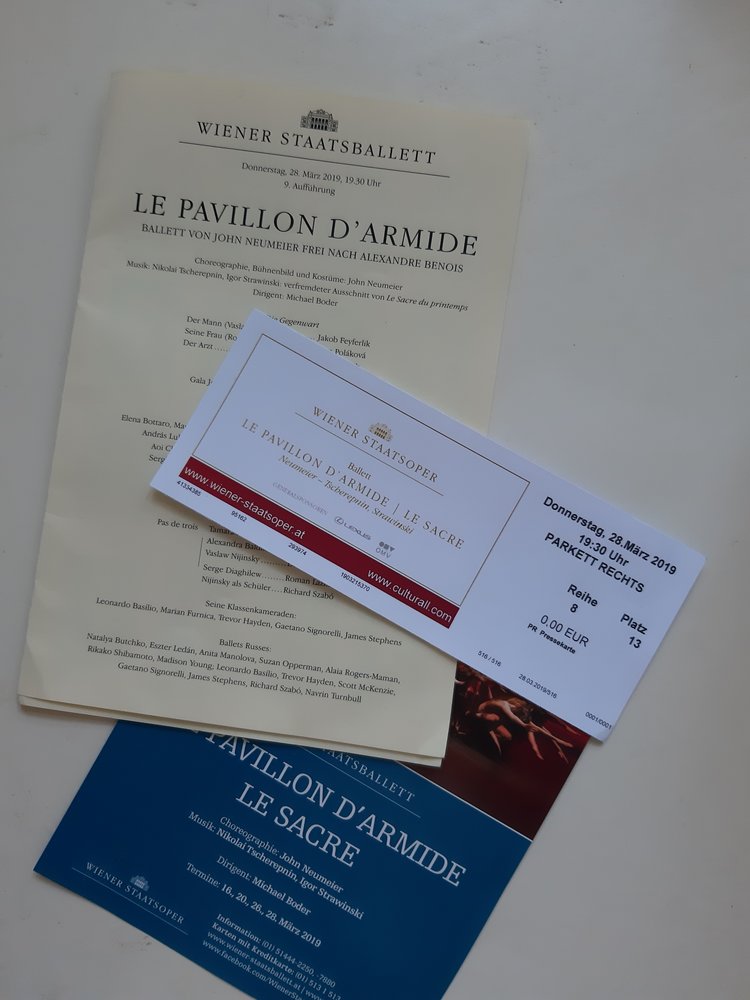
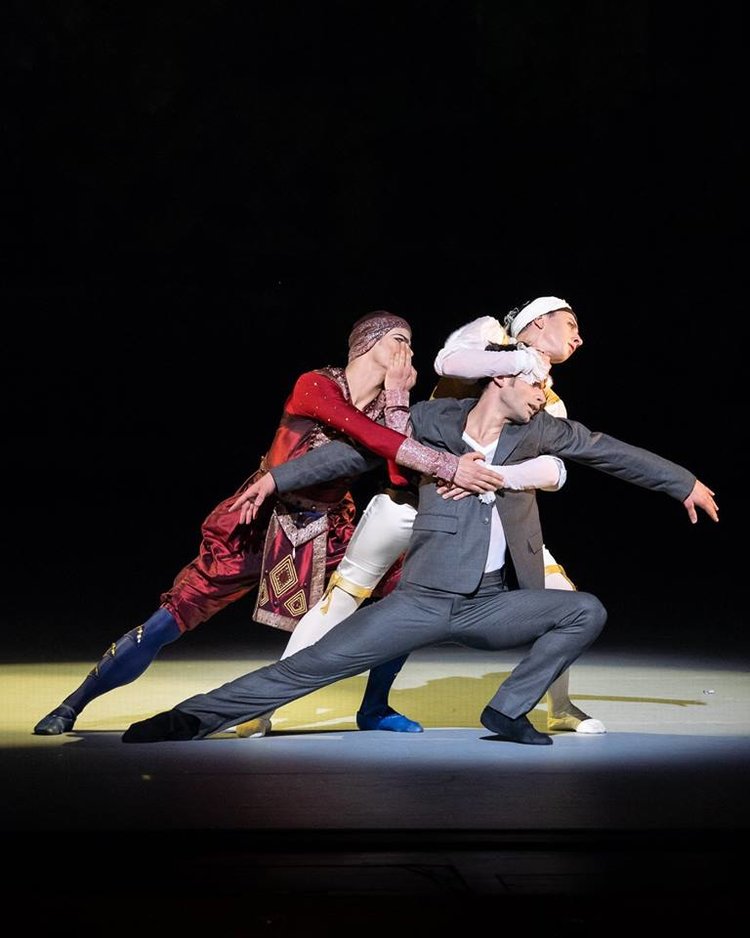
Nikolay Tcherepnin was born 5/3/1873 in Isbork an ancient town in the Pskov province in an estate that had been passed down to them by grandfathers to their father who was an active doctor in the city. He was the doctor who treated Dostoevsky during his last illness and knew Mussorgsky with Tcherepnin eventually editing and orchestrating Sorochinsky Fair for him. Both his son Alexander and his grandson Ivan were composers having done recordings for Olympia, Grand Piano, and Naxos.
Nikolay time-wise was in the 19th and 20th century so he fell under romantic, impressionism, and modernism so there was a combination of all three, Rimsky-Korsakov being the teacher. He also had a fondness for Tchaikovsky, Liadov, Stravinsky, and Prokofiev. Nikolay was the first in Paris to do The Golden Cockerel, and the following year his very own Fantastic Ballet ( takes place during the reign of Louis XIV) being performed by Diaghilev Ballets Russes, a first being staged by Mikhail Fokine from the short story Omphale. He was eventually replaced by Stravinsky as a composer of choice certainly a far more biting quality than Tcherepnin but how do you compete with the triad of Firebird, Petrushka, Rite of Spring even though his ballet had greater popularity than the Stravinsky ballets.
His most famous work Le Pavillon d’Armide was composed in 1903 and first performed at the Marinsky Theater in 1908 before premiering the Diaghilev in 1911. He also premiered Kikimora and Enchanted Lake for Liadov, two popular tone poems in 1909.
Le Pavillon d’Armide” Introduction and First Theme” opens with a drumroll followed by a powerful forceful theme from the strings and orchestra. It is said that the Marquis Susanne de Fierbois soul is represented by a Gobelin tapestry. As the theme continues a harp provides harmony and a second theme is introduced she appears to smile and the tapestry glows as a crescendo is reached. The original theme is repeated with the woodwinds carrying the melody followed by the violins. The tuba ends the track with a fine solo.
“Dance of the Hours” is performed by twelve dancing boys in gold and silver who come out and then disappear back into Saturn, an old clock. The music is bright and cheery Tchaikovsky ballet like with an upbeat theme that provides excellent background music for the dancing boys.
“The Goblein Tapestry Comes to Life” we hear a new theme from the horns with woodwinds harmony as a new French like theme in a Debussy style modernism shifts to one of tension and danger before it settles into calmness with the harp and strings leading the way. The harp plays an important role in this ballet as we will see.
“Armida’s Lamentation” produces music from the tapestry and Armida appears in human form in her garden. The harp offers chords and the strings offer a new melody. The music is bright and upbeat in a major key, a Rimsky-Korsakov type theme.
“Adagio” offers harps for her beloved knight Rinaldo with a new melody from the strings bright, cheery, and full of hope, a good adagio of yearning and some sadness.
“Grand Valse Noble“ is a fine salon type waltz with sweeping music.
“Variation-Allegro” is a series of musical cells of different styles of music with a celeste beginning the track with a sprightly tune followed by the flute and violins. Following is an Allegro followed by a dance and then a vivace with syncopation. To end the track there is a Baroque style music with trumpet calls.
“Little Ethopian Slaves” is similar to the second track with a xylophone carrying the melody.
” Dance of the Armida Ladies is a slow waltz
” Bacchus et la bacchantes” is a frantic dance that is also exotic and vicious The horns loudly play low notes with accompanying from the timpani. The trumpets offer a solo a respite from the savage pounding from the brass.
“Entry of the Magicians and Dance of the Shades ghosts that disappear at the waving of a wand pretty varied music.
“Dance of the Clowns” is yet another style and music not to be confused with circus music. It is a soft horn driven theme followed by flutes and violins. It is tranquil in nature offering a time of tranquility and peace.
“Scarf Dance” is a soft horn driven theme followed by flutes and violins. It is tranquil in nature offering a time of tranquility and peace.
“Pas de deux” returns to the blaring horns not a trait of Tchaikovsky but Rimsky-Korsakov. It switches to a solo clarinet and oboe
“Grand Valse Finale” ends the ballet in grand fashion with a rousing theme. In the theater the things the count thought he saw disappear one by one making him wonder?
Some reviewers who I have read compare this work as a poor imitation of a Tchaikovsky ballet. It lacks the spark. Gramophone comments on the use of a celesta which could have been used at the same time Tchaikovsky included it stating the opposite to be true. Chausson used it in 1888. Is there a patent on the use of musical instruments? Perhaps Tchaikovsky went to school on Tcherepnin? Who knows as it was invented in 1886. I found the recording (complete) to be quite varied in the selections of material and kept my attention for the full sixty-seven minutes. The Olympia recording is only thirty-four minutes plus eight minutes for the suite written as a separate piece, op. 4 instead of op. 2. In this case more is better and I welcome this re-recording of valuable historical material. There was room for the Suite highlights on this CD as track one from the suite is different from the highlights. I admit to getting confused between the two as they are both eight minutes in length but now have it straight in my head.
Available for purchase on 1/15/2021
Demon in the Bottle
November 30, 2020

Track Listing
- Demon in the Bottle: Main Title (1:07)
- Pirates Battle (1:57)
- Deadly Cave (2:46)
- Locker Intimidation (1:25)
- Skeletons / Discovering Treasure (3:47)
- Murray Talks (1:02)
- Blue Bottle Monster / Run for Your Life (4:12)
- Isn’t No Monster (1:54)
- Marvin Monster Chase / Looking for an Exit (2:43)
- Frantic Buttons / Freddie Finds Bottle (1:57)
- Nana’s Efreet Stories / Efreet Jumps (1:29)
- Hunting Murray / Marvin Escapes (2:25)
- Murray in the Lunchbox (1:01)
- Marvin’s Shower (2:12)
- Finding the Painting and The Body (2:29)
- Mirror Monster Chase / Scaffolding Climb (3:11)
- The Kiss (:33)
- Vice Grip Interrogation (1:27)
- Murray Plugs In (1:56)
- Monster Suction (2:28)
- She’s Dead,You Moron! / Trapped Inside (3:50)
- Heap of Melted Slang (:57)
- Freddie Regrets / The Girl Still Lives (4:31)
- Words of Reason / Amanda Expelled (5:18)
- Treasure Rediscovered (1:29)
- Marvin Leaves (2:04)
- Russell Learns (1:14)
- Demon in the Bottle: End Credits (2:13)
- Demon in the Bottle Suite
(Moscow Symphony Orchestra) (3:25)
Total Running Time: 68:12
John W. Morgan to me will always be remembered for the series of reconstructions of films he did for Naxos with William Stromberg for twenty-plus years. The liner notes explain his background and how he ended up in Hollywood doing what he wants which is to do scores for films.
John W. Morgan is a film composer/orchestrator/ and reconstructionist based in Los Angeles, California. After receiving his Master’s Degree in music at San Diego State University in 1977 and studying composition with David Ward-Steinman, he stayed at UCSD. He taught orchestration, music theory, and various film music courses.
The film, which is available to watch on U Tube, is from 1996 starring Ashley Tesoro, Michael Melota, Rahi Azizi, and Michael Dubrow. It is also now part of the Disney package and runs for 82 minutes produced by the Band brothers Charles and Albert, directed by Randall William Cook which on paper sounded great but in reality with no real budget to work with they were not a factor in the making of this film. Special effects, acting, and sets were awful. The music was relegated to background music which had little or no impact on the film. An understatement is to say I was disappointed in what it had to offer. I guess if I were younger I might have appreciated the film more but if I had not done this review I wouldn’t have wasted my time watching it.
Having said all of the above I found the score to be delightful, filled with underscore material that deserved a far better film than what it ended up in. The main title is a strong one, you’ll remember it as it is a pirate song complete with the era of Arabia and adventure a tribute of sorts to Ray Harryhausen and his movies. This theme is repeated several times in the score not as a leitmotif but in addition to the material being played.
The vast majority of the material is a mixture of synth, woodwinds, keyboard, trombones who did quadruple time in playing (played trombone); the result being incredible for the little he had to work with. Recorded over a three-day period of time the result was nothing short of spectacular and for this reason, it is something you should have in your collection as a study of how to orchestrate!
Some examples. Blue Bottle Monster features a harpsichord which is led in by a solo flute. It is quickly followed by Run For Your Life which has trombones playing overtime sliding almost out of control. It is followed by a cue Isn_t No Monster where the horns pick up again playing a theme in Herrmann-like fashion. One can picture Gunsmoke or Perry Mason and one of the many library cues used by Bernard Herrmann musical cues he wrote for CBS.
Marvin Escapes is a return to the main theme again with the secondary theme being played by the horns in frantic style. Each cue even though blocked out by the film is thought out, well placed and interesting to listen to if you enjoy soundtracks like I do. Mirror Monster Chase/Scaffold Climbing is another example of frantic overtime work from the brass.
The Case Of The Restless Redhead
July 24, 2020

Produced by Gail Patrick Jackson, Directed by William D. Russell, Written by Erle Stanley Gardner (1954) novel, With Whitney Blake, Ralph Clanton, Gloria Henry, Vaughn Taylor. Music by library including Herrmann and Goldsmith.
Returning home from her waitressing job Evelyn Bagby (Whitney Blake) finds a gun, calls Mason, heads out for a hotel, gets pulled off the road by a driver wearing a white hood. She fights his attempts firing two shots at the car and later a man she was trying to recover money from Harry Merrill turns up dead charging Evelyn with 1st degree murder.
One of the weaker plots in the series. Harry Boles (Vaughn Taylor) just doesn’t make sense to me at all. I did like the two guns that Mervyn Aldrich (Ralph Clanton)bought and the switching around of them Very Perry Mason like. I think you will like the attitude that Mason has in the early days of the show.
The Monster Maker (1944)
June 30, 2020
Starring J. Carrol Naish, Glenn Strange, Ralph Morgan, Tala Birell, and Wanda Mckay. Produced by Sigmond Neufeld (PRC Pictures) Directed by Sam Newfield Music by Albert Glasser
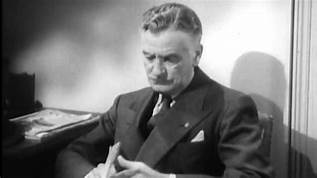
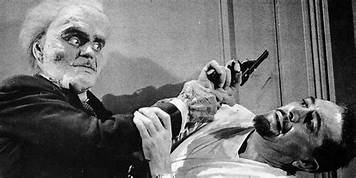
In April of 1944 Producers Releasing Corp. came out with a low budget horror film, their first in seventeen months at a cost of $305,000 to try and compete with Universal’s success with their monster lineup.Igor Markhoff (Naish) sees Patricia Lawrence (McKay), daughter of concert pianist Lawrence (Morgan), who bears a striking resemblance to his deceased wife. After she refuses the advances of his obsession a confrontation occurs with Markoff knocking out Lawrence allowing him to inject acromegaly, turning his features into a Frankenstein looking monster. With his success in developing a cure X53 for the disease, he offers the serum in exchange for her hand in marriage. Add a jealous assistant Maxine (Birell), gorilla (Ray Corrigan), and giant (Strange) and you have the cast of horrors. Maxine wants to talk and tell all and Markoff sends the gorilla after her, with her being saved by Ace the Wonder Dog perhaps the hero of the movie. Also playing a small role was Sam Flint who acted in nearly 400 films and television spots in a 40-year career. Finally Lawrence breaks free of the chains and straps that Markoff has used to bind him and kills Markoff. There is an X54 drug which of course cures Lawrence of any effects he may have had and everyone lives happily ever after.
The low budget especially with the make-up for Morgan got in the way of the final product. It looked pretty bad. You have to overlook the fact that acromegaly cannot be transmitted by injection. The cast of Nash, Morgan, Birell, and McKay was more than adequate for the low budget film. In fact, I found the piano playing sequence to be better than others I have seen making me wonder if Albert Glasser himself was playing. In Hollywood, he was the go-to guy for piano tuning and was quite an accomplished pianist. There is a chapter in Tom Weaver’s book Poverty Row Horrors about this movie. It is a film that is ranked as one of the better horror ‘B’ movies although if one ranks the film itself with other ‘B’ movies it is far down on the scale with movie actor performances and a budget of only several thousand dollars. filmed in less than a week.
It is one of the hundreds of films that are available for free on the internet with a decent picture and sound if you don’t try to make it too big or too loud. The film runs for about an hour so watching it commercial-free is okay. (**)
Agatha (1979)
June 28, 2020
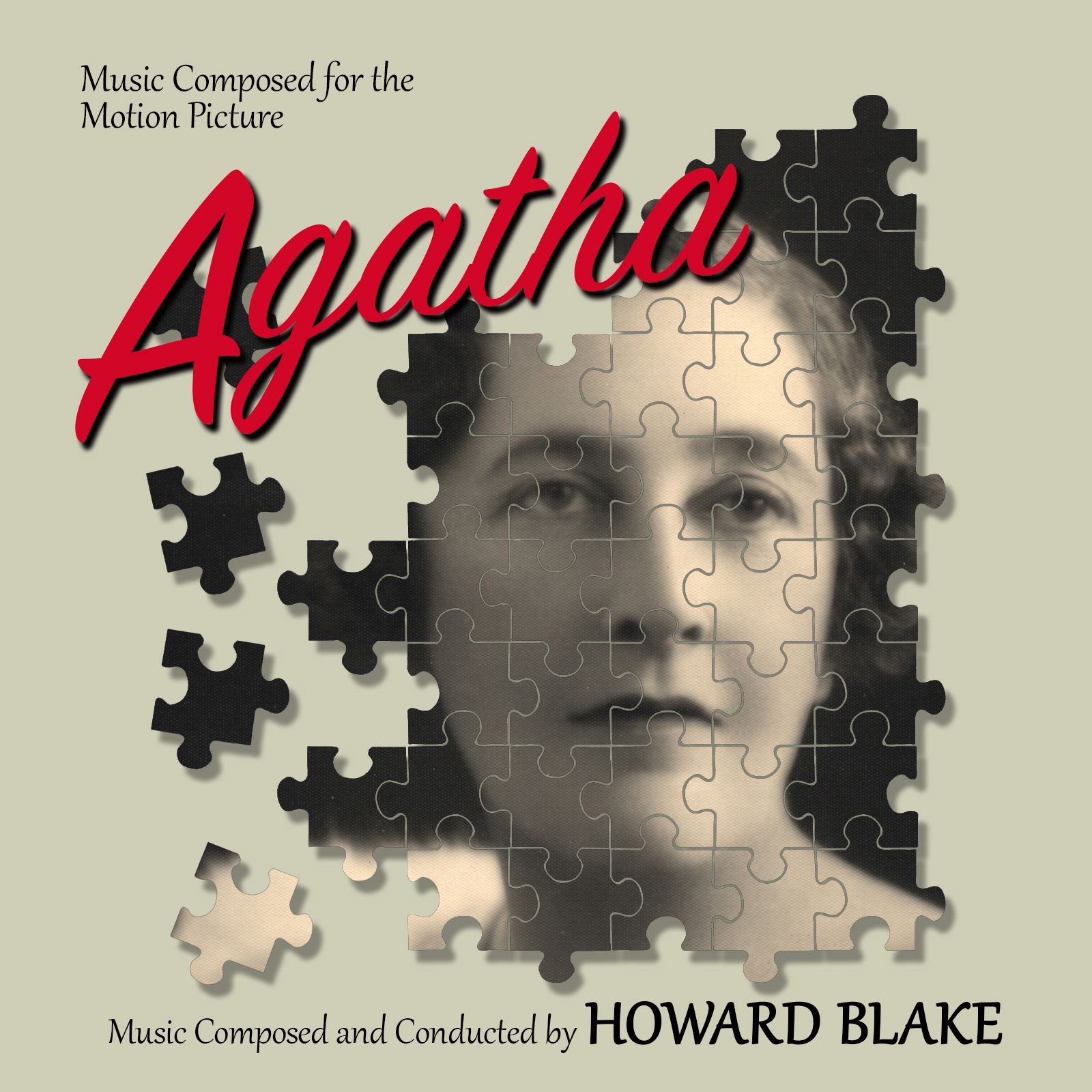
AGATHA Main Title Prelude
Agatha is a 1979 film starring Dustin Hoffman, Vanessa Redgrave, Timothy Dalton, and Helen Morse. It was produced by Jarvis Astaire and directed by Michael Apted. It told of the unexplained 11-day disappearance of Agatha Christie setting off the largest missing person’s hunt in England for the famed writer. To this day we don’t really know what happened as theories range from revenge on her husband taking a lover, the death of her mother, to amnesia. The movie is a fictional account of what could have happened. Three major stars at the time Hoffman, Dalton, and Redgrave provided credence to the picture giving it positive reviews. However, being a film I think it likely to be somewhat from the truth given the romance of Stanton and Christie, and the suicide attempt with the electric apparatus for the bath treatments. I found the whole film quite boring for the most part with the costume design, sets, and this rejected score being the strong points in a rather dull uninspired film about a topic that shouldn’t have been filmed in the first place. The screenplay is based on a Kathleen Tynan novel The Summer Aeroplane (1975).
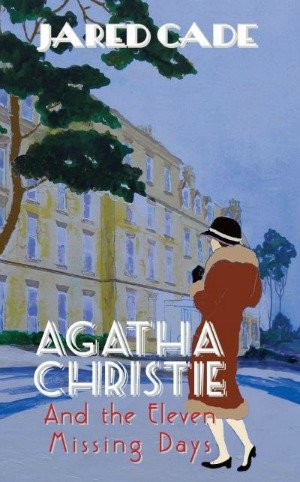
Written in 1999 and considered the best account of what happened
This release is the rejected score to Agatha likely abandoned because one of the stars Lynn Redgrave didn’t like it as well as the producer Astaire. They wanted and got a modern-sounding score from Johnny Mandel who produced a hit song with Paul Williams that went on to become a jazz standard Close Enough For Love. The score to me was a rehash of The Americanization of Emily in its sound and style but took a backseat in the film not influencing acting or the viewers.
The rejected film score is a return to the older days of film soundtracks when a smaller symphony orchestra was used by composers like Rozsa who was classically trained. He wrote melodies on top of other melodies with harmony screaming in the background. Listen to track two Look at Me/Breakfast/Agatha in Bed/Car Accident which is really four scenes but tells you a story if you listen to it carefully. The tremolo from the strings, the yearning from the strings powerfully written, a return to the main theme which combines wind instruments clarinet, flute, oboe, and bassoon, a switch to another theme from the oboe, the strings build in yearning and despair, the strings continue in their storytelling sounding like Lost Weekend before ending. Humbly said this is one of the better underscore tracks written. The Prelude has a nice buildup before the theme is introduced by the clarinet and continued with the strings offering a counter melody. The brass plays but is quite subdued and not distracting at all. Agatha on Train/Agatha’s Room is a harp based track with the woodwinds and percussion creating the background, quite a mysterious track. Agatha and Wally repeats the main theme in a romantic way to show a possible budding romance? Very tender. The Notebook and Climax is music that again is the old fashion style building up and ending on a softer quieter note with the oboe and harp. They Don’t Believe/Closing is a sentimental theme followed by the strings playing the main theme again. It is sad because Agatha knows what she is in for and Stanton on what could have been for them. I might say this about this soundtrack too. What might have been? While the main theme which is included in the review drives this haunting film with a haunting melody there are more interesting orchestral aspects of this soundtrack. FYI the Mandel release has never had a digital or CD release only the vinyl.
TRACKLISTING:
1. Prelude (3:00)
2. Look At Me / Breakfast /
Agatha in Bed / Car Accident (4:48)
3. Agatha on Train / Agatha’s Room (3:00)
4. Pierrot’s Old School Tie /
Certainly Not (2:45)
5. Schnee (2:32)
6. Yes Sir / Date (1:17)
7. Following Baths (2:53)
8. Agatha and Wally (4:06)
9. Wally on the Phone /
Appointment Book (1:54)
10. Agatha Asleep (3:29)
11. Therapy Room Door (2:05)
12. The Notebook and Climax (5:52)
13. They Don’t Believe / Closing (6:06)
14. Dixieland Stomp (0:40)
Total Time: 45:04



